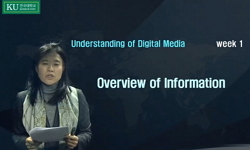When designing universal design products or their interfaces, it is necessary to have knowledge about the environment in which the target product is going to be used. Product development should consider the interaction between the envisaged product or...
http://chineseinput.net/에서 pinyin(병음)방식으로 중국어를 변환할 수 있습니다.
변환된 중국어를 복사하여 사용하시면 됩니다.
- 中文 을 입력하시려면 zhongwen을 입력하시고 space를누르시면됩니다.
- 北京 을 입력하시려면 beijing을 입력하시고 space를 누르시면 됩니다.
https://www.riss.kr/link?id=A103788554
-
저자
Keiichi Watanuki (Saitama University)
- 발행기관
- 학술지명
- 권호사항
-
발행연도
2010
-
작성언어
-
- 주제어
-
등재정보
KCI등재,SCIE,SCOPUS
-
자료형태
학술저널
-
수록면
257-262(6쪽)
-
KCI 피인용횟수
3
- 제공처
-
0
상세조회 -
0
다운로드
부가정보
다국어 초록 (Multilingual Abstract)
When designing universal design products or their interfaces, it is necessary to have knowledge about the environment in which the target product is going to be used. Product development should consider the interaction between the envisaged product or a demo product with the same functions on the one hand, and the users on the other, as well as observing the everyday activities of typical users, understanding the procedures and methods for using the product and subsequently pinpointing the areas which are problematic or in need of improvement. To evaluate whether the designed product is easy to use, and to improve its usability, it is also essential to record the perceptions of the people, the movement characteristics, the operability, any mental or physical stress, and so on. There is a need for products and environments which are easily applicable to various people and utilizational setups. In this paper, we present the development of a tangible design review system which makes use of virtual reality technology to display a close model of the actual product, making readily available not only visual information but also the perception of volume and weight through the fusion of kinesthetic information,enabling many people to communicate easily while experiencing this virtual reality. Furthermore, the design review of universal design products which makes use of this system will be discussed.
참고문헌 (Reference)
1 K. Watanuki, "Knowledge acquisition and job training for advanced technical skills using immersive virtual environment" 1 (1): 48-57, 2007
2 North Carolina State University, "Center for universal design"
3 M. Helander, "A Guide to Human Factors and Ergonomics Second Edition" Taylor & Francis 2006
1 K. Watanuki, "Knowledge acquisition and job training for advanced technical skills using immersive virtual environment" 1 (1): 48-57, 2007
2 North Carolina State University, "Center for universal design"
3 M. Helander, "A Guide to Human Factors and Ergonomics Second Edition" Taylor & Francis 2006
동일학술지(권/호) 다른 논문
-
Surface durability of powder-forged roller treated by shot peening
- 대한기계학회
- Masanori Seki
- 2010
- KCI등재,SCIE,SCOPUS
-
- 대한기계학회
- 유승열
- 2010
- KCI등재,SCIE,SCOPUS
-
- 대한기계학회
- Yuki UOHASHI
- 2010
- KCI등재,SCIE,SCOPUS
-
Tribology issues in nanoimprint lithography
- 대한기계학회
- 김광섭
- 2010
- KCI등재,SCIE,SCOPUS
분석정보
인용정보 인용지수 설명보기
학술지 이력
| 연월일 | 이력구분 | 이력상세 | 등재구분 |
|---|---|---|---|
| 2023 | 평가예정 | 해외DB학술지평가 신청대상 (해외등재 학술지 평가) | |
| 2020-01-01 | 평가 | 등재학술지 유지 (해외등재 학술지 평가) |  |
| 2012-11-05 | 학술지명변경 | 한글명 : 대한기계학회 영문 논문집 -> Journal of Mechanical Science and Technology |  |
| 2010-01-01 | 평가 | 등재학술지 유지 (등재유지) |  |
| 2008-01-01 | 평가 | 등재학술지 유지 (등재유지) |  |
| 2006-01-19 | 학술지명변경 | 한글명 : KSME International Journal -> 대한기계학회 영문 논문집외국어명 : KSME International Journal -> Journal of Mechanical Science and Technology |  |
| 2006-01-01 | 평가 | 등재학술지 유지 (등재유지) |  |
| 2004-01-01 | 평가 | 등재학술지 유지 (등재유지) |  |
| 2001-01-01 | 평가 | 등재학술지 선정 (등재후보2차) |  |
| 1998-07-01 | 평가 | 등재후보학술지 선정 (신규평가) |  |
학술지 인용정보
| 기준연도 | WOS-KCI 통합IF(2년) | KCIF(2년) | KCIF(3년) |
|---|---|---|---|
| 2016 | 1.04 | 0.51 | 0.84 |
| KCIF(4년) | KCIF(5년) | 중심성지수(3년) | 즉시성지수 |
| 0.74 | 0.66 | 0.369 | 0.12 |






 KCI
KCI






